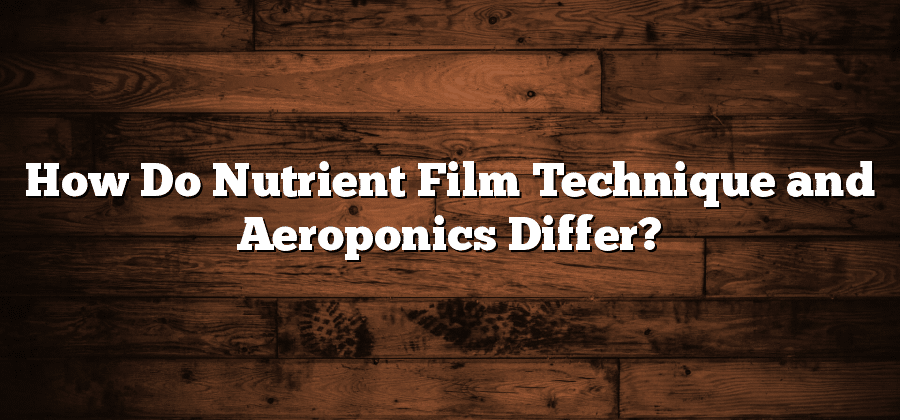Nutrient Film Technique: The art of continuous flow
The Nutrient Film Technique (NFT) is a hydroponic system that is gaining popularity amongst growers due to its efficient use of water and nutrients. In this system, a thin film of nutrient-rich solution flows over the roots of the plants, providing them with a constant supply of essential elements. This continuous flow of nutrients ensures that the plants receive the necessary nourishment without any stagnation or depletion.
One of the key advantages of NFT is its ability to promote optimal root oxygenation. As the nutrient solution is constantly flowing, it creates a thin film that allows ample oxygen exchange with the surrounding air. This oxygenation is vital for the roots’ respiration process and promotes healthy growth. Additionally, the constant flow of nutrient solution prevents the roots from becoming waterlogged, reducing the risk of root rot and other water-related diseases.
Aeroponics: Harnessing the power of mist
Aeroponics is an innovative system of growing plants that utilizes mist as the primary method of delivering nutrients and hydration. Unlike traditional soil-based or hydroponic systems, aeroponics suspends the plant’s roots in air, allowing them to be constantly bathed in an atomized mist of water and nutrients. This fine mist is created by using high-pressure sprayers or ultrasonic devices, ensuring that each root receives an optimal amount of moisture and nutrients.
One of the key advantages of aeroponics is its ability to provide superior oxygenation to the plant’s root system. The misty environment promotes abundant oxygen absorption, which is essential for healthy nutrient uptake and overall plant growth. This increased oxygenation not only boosts the plant’s metabolism and nutrient assimilation, but it also prevents the development of anaerobic conditions that can inhibit root growth. As a result, aeroponic systems are known to produce plants with more robust root structures, leading to faster growth rates and higher yields.
Root system support: Comparing NFT and Aeroponic systems
In the world of hydroponics, ensuring proper root system support is crucial for the overall health and productivity of plants. Two popular methods that have gained significant attention in recent years are Nutrient Film Technique (NFT) and Aeroponics. While both techniques offer unique advantages, they differ in terms of how they provide support to the plants’ root system.
NFT systems utilize a continuous flow of nutrient-rich water along a shallow channel, which allows the roots to be in constant contact with the nutrient solution. This method provides excellent support for the root system, as the constant flow of nutrients encourages strong and healthy root growth. Additionally, the shallow channel design ensures that the roots are well-aerated, promoting oxygenation and preventing any issues related to over-watering.
Water and nutrient efficiency: Which method reigns supreme?
In the world of hydroponics, water and nutrient efficiency are crucial factors to consider when comparing different growing methods. Two popular methods that are often compared in terms of efficiency are Nutrient Film Technique (NFT) and Aeroponics. Each method offers distinct advantages in terms of water and nutrient usage, making it difficult to determine which one reigns supreme.
NFT, known for its continuous flow system, allows water and nutrients to flow over the roots of the plants in a thin film. This method ensures that the roots have constant access to water and nutrients, minimizing waste. Additionally, the nature of NFT prevents water from becoming stagnant, reducing the risk of root rot and other plant diseases caused by excessive moisture. Overall, NFT is highly efficient in delivering water and nutrients directly to the roots, promoting sustainable resource usage.
On the other hand, Aeroponics takes water and nutrient efficiency to another level by utilizing a misting system. Instead of using a continuous flow of water, Aeroponics delivers nutrients in the form of a fine mist, allowing for optimal absorption by the plant roots. This misting system ensures that every drop of water and nutrient is utilized, leaving no room for wastage. By providing a highly oxygenated environment, Aeroponics allows for faster nutrient uptake, promoting efficient plant growth.
Both NFT and Aeroponics methods demonstrate admirable water and nutrient efficiency, but determining which one is supremely efficient requires further research and analysis. Various factors, including the specific plant varieties grown, infrastructure costs, and environmental impact, need to be considered to make a sound judgment.
Oxygenation: Examining oxygen levels in NFT and Aeroponic setups
The levels of oxygen within a nutrient film technique (NFT) system are crucial to the success of the plants being grown. In NFT, a thin film of nutrient-rich solution flows over the roots, providing them with water and nutrients. This constant flow creates an oxygen-rich environment for the roots, allowing them to effectively absorb and utilize the available nutrients. The oxygen is supplied through the flow of the nutrient solution, as it cascades over the roots, ensuring that they receive an adequate supply at all times.
On the other hand, in an aeroponic system, oxygenation is taken to a whole new level. Instead of a continuous flow of nutrient solution, the roots of the plants are misted with a fine spray of nutrient solution. This mist creates a highly oxygenated environment for the roots, as the tiny droplets of solution suspended in the air allow for maximum exposure to oxygen. This method of oxygen delivery promotes rapid growth and development, as the roots are constantly supplied with the oxygen they need to thrive. This unique feature of aeroponics sets it apart from other hydroponic systems, making it a popular choice for growers looking to maximize plant growth and yield.






